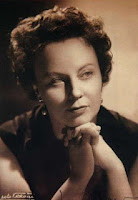Michelangelo’s David
Masterpiece emerged from an abandoned block of marble
A huge statue of the Biblical hero David, sculpted by Michelangelo, was unveiled in Piazza della Signoria in Florence on this day in 1504. The 5.17m (17ft) high statue was placed outside the Palazzo Vecchio, the seat of civic government in Florence. The sculpture symbolised the defence of civil liberties in the republic of Florence, which at the time was an independent city state threatened on all sides by rival states. It was thought that the eyes of David were looking towards Rome and seemed to have a warning glare. David is regarded as one of Michelangelo’s masterpieces. He was sculpted from a block of Carrara marble originally designated to be one of a series of prophets for Florence Cathedral. The marble was worked on by two artists before being abandoned and left exposed to the elements in the yard of the Cathedral workshop. After 25 years of neglect, the Cathedral authorities decided to find an artist to produce a sculpture from their expensive block of marble. At the age of 26, it was Michelangelo who convinced the overseers of works for the Cathedral that he deserved the commission. Read more…
_________________________________________________________________
Magda Olivero - soprano
Singer who performed into her 80s and lived to 104
The opera singer Magda Olivero, who became known as the last verismo soprano, died on this day in 2014. She was almost halfway through her 105th year, having been born in 1910. Olivero became associated with the works among others of Francesco Cilea, Pietro Mascagni, Umberto Giordano and Franco Alfano, all of whom she actually worked with in person, her longevity providing a 21st century link with the world of 19th century Italian opera. She missed the chance to know and work with Giacomo Puccini only narrowly, the composer passing away at the age of 66 when Olivero was 14. Born in Saluzzo in Piedmont, Olivero made her operatic debut eight years after Puccini’s death in a radio production in Turin in 1932. She gave her last stage performance 49 years later in 1981, although even that was not the end of her career. Her last recording of her signature role - Cilea’s Adriana Lecouvreur - did not come until 1994, when she was still able to control her pitch and tone at the age of 83. Born as Maria Maddalena Olivero to a well-to-do family who gave her a good education, she built on her radio debut to establish a successful career. Read more…
___________________________________________________________________
Ludovico Ariosto – poet
Writer led the way with spirituality and humanity
The man who coined the term humanism - umanesimo - Ludovico Ariosto, was born on this day in 1474 in Reggio Emilia. He became famous after his epic poem, Orlando furioso, was published in 1516. It is now regarded by critics as the finest expression of the literary tendencies and spiritual attitudes of the Italian Renaissance. Ariosto chose to focus on the strengths and potential of humanity, rather than upon its role as subordinate to God, which led to the Renaissance humanism movement. His family moved to live in Ferrara when he was just ten years old and the poet has said he always felt ferrarese. His father insisted he studied law but afterwards Ariosto followed his natural instincts to write poetry. When his father died in 1500, Ariosto had to provide for his four brothers and five sisters and took the post of commander of the Citadel of Canossa at the invitation of Ercole I d'Este. Then, in 1503, he entered the service of Cardinal Ippolito d’Este, son of Ercole I. He was obliged to follow the Cardinal on diplomatic, and sometimes dangerous, missions and expeditions. Read more…
Home

























